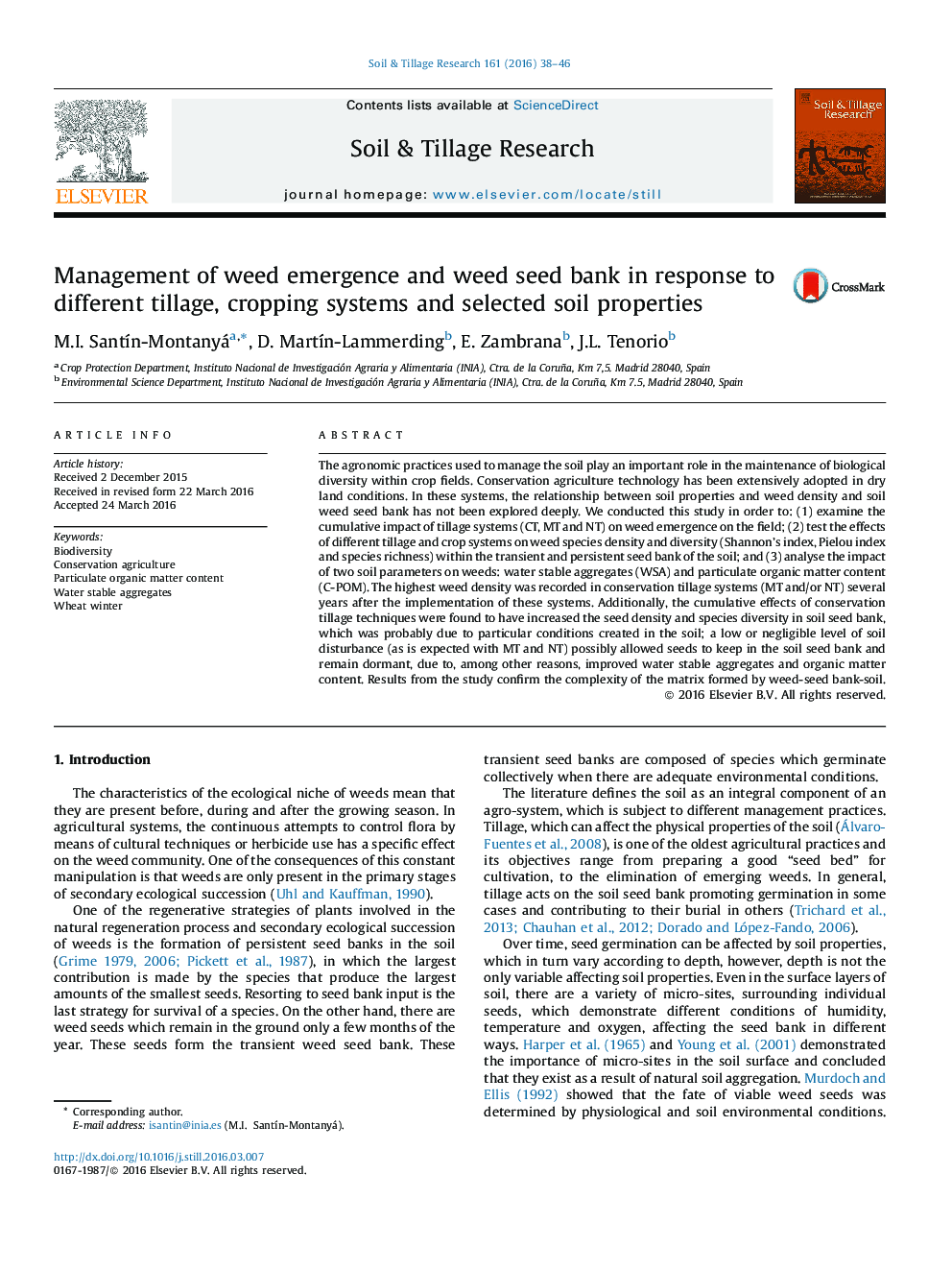| Article ID | Journal | Published Year | Pages | File Type |
|---|---|---|---|---|
| 6773407 | Soil and Tillage Research | 2016 | 9 Pages |
Abstract
The agronomic practices used to manage the soil play an important role in the maintenance of biological diversity within crop fields. Conservation agriculture technology has been extensively adopted in dry land conditions. In these systems, the relationship between soil properties and weed density and soil weed seed bank has not been explored deeply. We conducted this study in order to: (1) examine the cumulative impact of tillage systems (CT, MT and NT) on weed emergence on the field; (2) test the effects of different tillage and crop systems on weed species density and diversity (Shannon's index, Pielou index and species richness) within the transient and persistent seed bank of the soil; and (3) analyse the impact of two soil parameters on weeds: water stable aggregates (WSA) and particulate organic matter content (C-POM). The highest weed density was recorded in conservation tillage systems (MT and/or NT) several years after the implementation of these systems. Additionally, the cumulative effects of conservation tillage techniques were found to have increased the seed density and species diversity in soil seed bank, which was probably due to particular conditions created in the soil; a low or negligible level of soil disturbance (as is expected with MT and NT) possibly allowed seeds to keep in the soil seed bank and remain dormant, due to, among other reasons, improved water stable aggregates and organic matter content. Results from the study confirm the complexity of the matrix formed by weed-seed bank-soil.
Related Topics
Physical Sciences and Engineering
Energy
Renewable Energy, Sustainability and the Environment
Authors
M.I. SantÃn-Montanyá, D. MartÃn-Lammerding, E. Zambrana, J.L. Tenorio,
